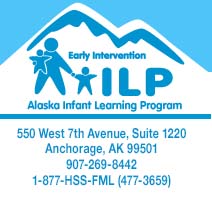
Safety Checklist: 8 Years to 11 Years
Children at this age are very developed in their coordination and their activities include organized sports. Sometimes at this age a false sense of security in terms of allowing decision-making by the child can lead to an injury. There should be very strict rules about bicycle safety, swimming, and allowable activities when alone. Safety hints at this age include:
- The most common way for a child to be injured at this age is through sports. Most twisted ankles, broken bones or head injuries are sustained during sports. Safety should be of the utmost importance during sporting activities. Helmets, shin guards and wrist guards should be used during rollerblading or skate boarding;
- Trampolines cause more broken bones than any other toy and should be discouraged;
- Cardiopulmonary resuscitation (CPR) can be learned at this age;
- All medicines and poisonous substances should be locked and out of reach of children;
- All small objects, plastic bags and balloons, which can cause choking, should be monitored closely;
- All sharp objects such as knives or scissors should be monitored closely;
- All electrical outlets should be covered;
- Syrup of Ipecac, which promotes vomiting, should be available as well as a number of your local poison control center;
- Children should be supervised near all pools, tubs or high places;
- All pools or hot tubs should have fences on all four sides;
- All furniture such as dressers or chests of drawers should be securely latched to the wall to prevent being pulled on top of a child. Many children will reach for a high object and try to climb on a chest of drawers only to have it tip over and fall on them;
- All curling irons, irons, hot liquids and other objects should be monitored closely;
- Sunscreen of at least 15 SPF should be used for outdoor activities;
- Insect repellent containing up to 10% DEET should be used in places where insects are prevalent. Children should be checked for tick attachments if they live in an area of tick settlements;
- Seat belts with a booster seat if necessary should be used for all car trips and the children should be in the back seat. The Auto Safety Hotline number is 1-888-327-4236;
- Extension cords should have electric tape wrapped around the junctions;
- Parents should know CPR (Cardiopulmonary resuscitation). Call the American Heart Association at 1-800-242-8721 for information;
- Windows should be closed and locked or guarded. Screens are not enough to prevent children from falling through a window if they are leaning against it;
- Guns should be safely stored and locked;
- The water heater should be 120 degrees Fahrenheit (50.0 degrees Celsius) or less;
- All cooking pots and pans should be on the back burner with the handles facing the back;
- Do not store poisons in drinking bottles, glasses or jars;
- Outdoor play should be closely monitored;
- A helmet should always be worn on a bicycle and never ride with passengers on a bicycle;
- All houses should have a smoke detector, fire extinguisher and fire escape plan;
- Watch children near traffic. Teach children to always stop at the curb, look both ways before crossing the street, and wait for any cars coming to pass. Teach them to cross the street only when the road is clear;
- All medicines should have safety caps;
- Children should be instructed not to play with matches or lighters;
- Children should be taught animal safety. They should learn not to approach unknown animals and not to try to play with animals while they are eating;
- Children should learn how to dial 911;
- Children should be taught to never eat anything unknown;
- All of these safety precautions should be present in any home, school, friend or family location.
